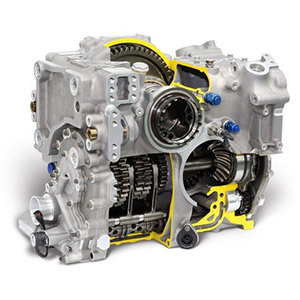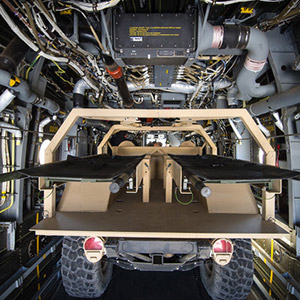R&D Tax Credit News

Systems Integrators Can Recover Cash With R&D Tax Credits
September 18, 2019
If you’ve been in business more than a few hours, you understand that building and growing a business can be a Herculean task. It can be even more challenging if your customer is the government or government contractors. From proposal to procurement to strict compliance requirements (thanks to the DCAA), growing a healthy business may seem even more daunting.
To be efficient, you need to extract every bit of value that you can (without wearing everyone out) from employees, subcontractors, consultants, and even your tax strategy. The latter is where the research and development tax credit (R&D credit) can go to work for you and help you recoup a portion of the dollars spent in the development of technologies.
These technologies don’t need to be brand new (i.e. new enough to be patentable). They can simply be the adaptation of existing science to new applications (as is the case with a lot of SBIR programs) or the integration of disparate subsystems into one (as is often the case for companies classified as systems integrators).
How do systems integrators qualify for R&D credits?
If I had a dime for every time, I was told that a company doesn’t think they qualify for the R&D Credit “because they don’t do R&D,” there’s a great chance I’d be retired by now.
Inevitability, when you hear of the R&D credit, you think of the typical definition of R&D. It probably reminds you of getting in the lab and dissecting animals. Or maybe, it sounded a lot like chemistry experiments that required fire extinguishers to be close by.
The truth is that federal (and most states’) R&D credits reward research activities at a much lower level of innovation. The legislation describes the exact set of criteria that activities must pass to be eligible for the credit. This is commonly called the four-part test (outlined in Treasury Regulations Sec. 1-41.4):
- Technological in Nature– Activities you perform must be based on the “hard sciences” such as physics, engineering, computer sciences, biology, and chemistry.
- Technological Uncertainty– You are performing your development activities to uncover information you don’t already know, creating uncertainty as to the appropriate method, design, or capability related to your product, process, or software.
- Process of Experimentation– Your activities require a process of theoretical and/or physical evaluation that can result in the development of design alternatives.
- Permitted Purpose– The goal of your activity must be to create new or improve the function, performance, reliability, or quality of a product, process, or software.
In the vast majority of projects undertaken by systems integrators, the four-part test is easily met. Most systems integration (or systems engineering) projects will:
- Technological in Nature– Require full reliance on engineering principles
- Technological Uncertainty– Require a design with unique characteristics to fulfill government specifications
- Process of Experimentation– Require thorough evaluation of design and prototypes and even a sign-off before delivery and/or deployment
- Permitted Purpose– Create a new function or improve an existing system such as weapons, communications, navigation, etc.
The fact that you are in the systems integration business doesn’t mean you won’t have to design, develop, test, refine, and optimize your technology solutions the same way other industries do. Whether your employees are doing the work, or you have the help of subcontractors and consultants, the activities you’re performing have a very high likelihood of qualifying for valuable R&D credits.
How do I get R&D credits?
Now that you know that you’re eligible for R&D credits, you need to make sure these credits are part of your business’ success strategy. The federal R&D credit is claimed using one of three existing calculation methods. Regardless of which calculation method you choose (or are required to use), your process for claiming the credits on your tax returns will look like this:
- Identify your eligible projects or activities (i.e. projects/activities that pass the four-part test above)
- Collect engineering documentation demonstrating that the activities you performed do, in fact, pass the four-part test. [Future internal link; Ariane is writing a post on documentation collection]
- Gather the costs associated with those eligible activities: wages, materials, subcontractors and consultants.
- Calculate the R&D credits as described in Sec. 41 of the Internal Revenue Code
- Incorporate the credit calculation into your corporate tax return before filing
Make sure you keep the worksheets used to calculate the credits and the supporting engineering documentation. These will be vital to fend off a challenge by the IRS or state revenue departments should you get audited. [internal link: just written by Ariane].
Get the experts to do the work for you
The work you do as a system integrator is definitely eligible for R&D credits. Leaving these valuable dollars on the table is just not an option for you. But you’ve got a business to run. Having an expert in your corner maximizes your dollars and minimizes your stress.
R&D credit experts can guide you through the entire process and handle most of it for you, from identifying eligible activities to defending your credit under audit. You won’t waste your valuable time figuring out how to convince an IRS auditor that your R&D activities qualify.
Contact us to chat about the R&D credits and other tax incentives. While every business is unique, our engineers know exactly where to look for every eligible cent.
Carlos Freitas works with companies in a wide range of industries helping them with R&D Credits and Local & State Tax Incentives. He is passionate about helping them navigate complex issues while uncovering additional dollars for innovation and business growth. Carlos has authored articles on these subjects and is a frequent speaker at industry associations. He has a BS in Electrical Engineering from Purdue University and an MBA from Indiana University.
Featured Projects





